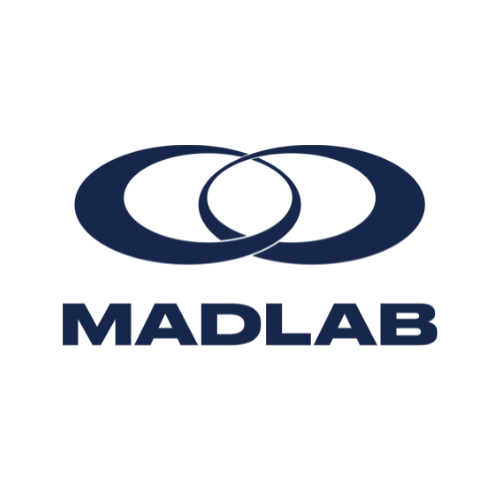THE NINE LAWS SERIES:
LAW #2.
This nine-part series takes a deep dive into Madlab’s 9 Laws, laws that, if followed, will lead a business to improve the most important six key performance indicators (6 KPIs):
- Average client value
- Client retention
- Dollars per coach hour
- Total coach pay
- Business profit
- The ability to build a sellable asset
Law #2:
Fundamentals, which begin with a three personal training session assessment, should be done in a one-on-one training environment with the same coach for the duration of the fundamentals stage, graduating to group classes based on benchmarks.
Note: The number of personal training sessions required after the initial assessment largely depends on the client’s current abilities, training history, injury history, goals, your facility programming and, to some degree, budget, but generally, clients do between 12 and 20 sessions depending on the individual.
The Client
For the inexperienced client who is new to training, it’s easy to see how one-on-one attention and coaching is the most effective way to prepare them to be successful in a group class, but what about the experienced client who knows what they are doing?
Through working with hundreds of gym owners around the world since 2005, we have discovered that, regardless of skill and fitness level, the longer you keep a client in personal training before graduating them to group classes, the better retention is long-term.
This comes down to two reasons:
- Educated clients are more likely to buy in and ultimately see results
- Clients with a personal relationship with a coach stick around longer
Education: Even if someone moves well and knows what they’re doing, this doesn’t mean they understand the intention behind why they’re doing what they’re doing.
- A client who lacks understanding and education is less likely to adhere to programming prescriptions and more likely to choose movements or loads that aren’t appropriate for their abilities and goals.
- In this sense, there’s a difference between showing people movements versus teaching them to understand concepts and intention. This is the purpose of one-on-one fundamentals: To provide clients not just with the appropriate hinging, squatting, pushing, pulling and midline tools to succeed but to get them to a place where they understand and, more importantly, buy into the method behind the madness, so to speak.
The result: Educated clients will be more successful, as measured by their fitness results and achieving their goals, and, in turn, are more likely to be willing to pay for a high-value service (average client value) and stick around long-term (retention).
Relationship: There’s a reason early dating is usually done in a one-on-one setting, and the same is true of building a solid foundation for an open, authentic, honest relationship between a client and a professional coach.
The bottom line: Someone isn’t going to tell you about their fear of dying young if they don’t lose weight and get healthy in a group fundamentals environment.
This kind of connection and vulnerability can only be done one-on-one. And by the time you spend 15 to 20 intimate hours with a client, you’re going to be in a way better place to truly be able to help them solve the problem or problems they showed up for in the first place.
The result: Once again, greater ACV and retention.
The Coach
Putting clients through one-on-one fundamentals is helpful for the coach, not just financially but also in terms of making their lives less stressful.
Financials: At Madlab School of Fitness, clients pay $100 an hour for personal training, and coaches earn a percentage of this revenue (between 40 and 50 percent depending on whether the client is a referral).
This means, if a client drops $1,200 on fundamentals, the coach earns between $480 and $600 on these first 12 sessions, or somewhere between $40 and $50 an hour, well above the hourly rate to coach a group class.
From there, these clients move to a hybrid membership (Law # 4), where they pay $300 a month, and the coach continues to earn 40 to 50 percent of their monthly fee.
More on this when we deep dive into Law #4, but Cole’s Notes: In the Madlab system, a coach who has 50 clients and coaches 8 group classes per week can effectively earn well above $100 an hour for each of those eight classes.
Less Stress: Have you ever coached a class with three new athletes, none of whom seem to have retained anything from their three introductory classes, so you find yourself running around stressed out, head on a swivel, trying to figure out who is moving the most egregiously?
The point is it can be stressful to coach a class of 10 athletes who aren’t properly prepared for classes to the point that the hour feels like three hours, putting you on the fast track to burnout.
But when everyone is properly trained up and is somewhat autonomous, the coach can focus on higher-level coaching cues and ensure even the experienced athletes get the coaching they deserve.
The Business
A happy wife is a happy life, right?
Same same for the business: When clients are properly taken care of and are seeing the results they have always wanted and are sticking around, and when coaches are earning a good living and feeling satisfied with their jobs, they too will stick around. All this = a happy business with the potential for long-term success.
Check back for Law #3: Coach for Life
So if you found this article helpful, and would like to see exactly how these types of strategies could improve your sales and dramatically increase your revenue on a consistent basis, click the button below.
Menu
Contact Us
1980 Clark Drive
Vancouver, BC Canada
V5N 0A9
info@madlabbusiness.com
Follow Us

Copyright © 2023 Madlab Business. All Rights Reserved.

